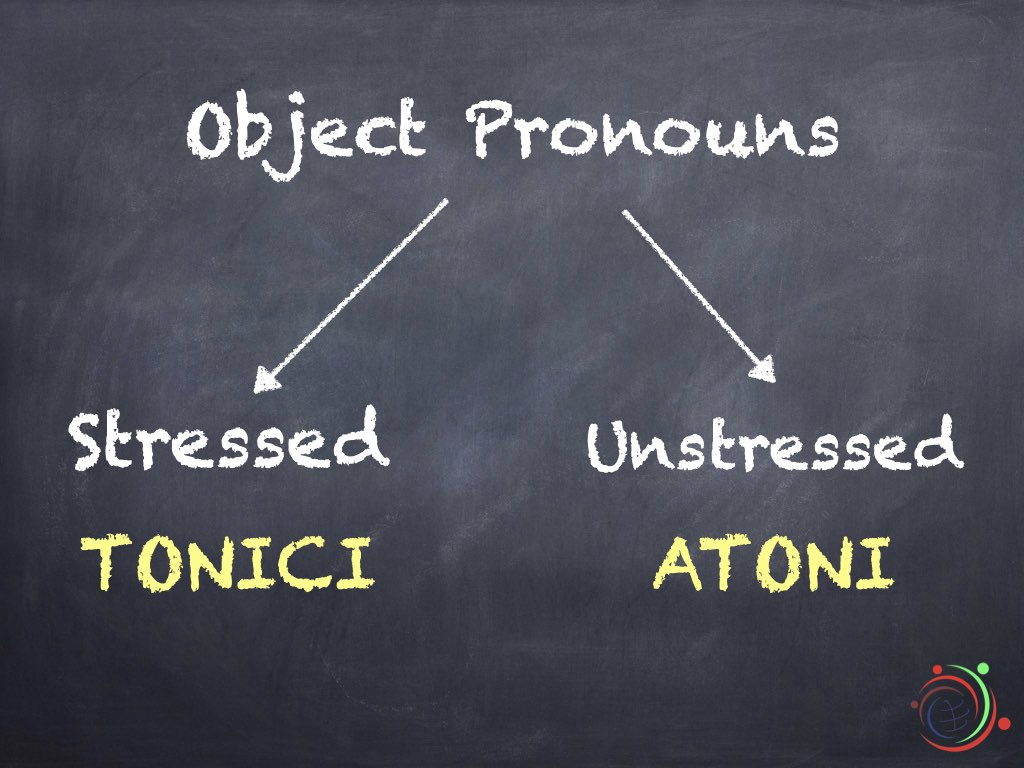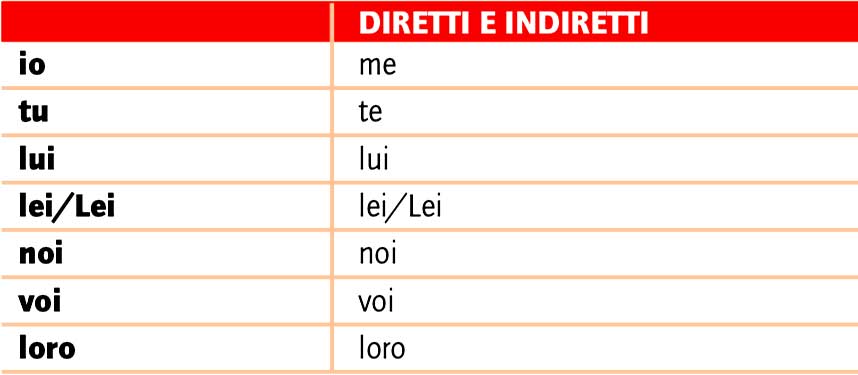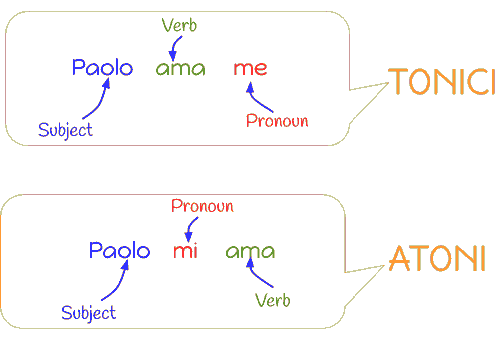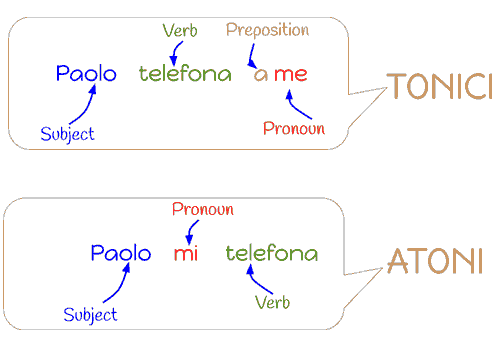If you’re learning Italian, you may have come across the terms tonici and atoni when studying pronouns. While they may seem confusing at first, understanding the difference between the two can greatly improve your Italian grammar skills. In this post, we’ll break down the differences between tonici and atoni pronouns and provide examples to help you master their usage.
In addition to the normal (unstressed-weak) form of direct and indirect pronouns called ATONI, there is also the (stressed) form called TONICI.
Do you know how to use Pronouns called TONICI? Test what you know with interactive exercises and read the explanation to help you.

When the pronoun is next to the verb as in ti vedo (I see you), it’s unstressed, or ATONO (conjunctive).
When the pronoun follows the verb as in vedo te (I see you, with emphasis on the “you“), or a preposition as in con te (with you, with emphasis on the “you“) it’s stressed, or TONICO (disjunctive).
What are Tonici Pronouns?
There is another type of object pronoun (Direct or Indirect) that goes after the verb. It is known as a stressed or tonic pronoun.
They are used for emphasis, clarification, and to replace the noun in the sentence. Tonici pronouns are typically placed before the verb and are always stressed.
- With the exception of me and te, it looks the same as the subject pronouns.
- These stressed pronouns are the only pronouns you can use after a preposition.
- Stressed forms always refer to people, not objects.
Stressed pronouns are normally quite separate from other words and in particular from the verb. For this reason, they are sometimes called disjunctive (unjoined) pronouns.
✳️ Here are the Italian tonici pronouns:

✳️ Example sentences using tonici pronouns:
Invitano te, non me? (They’re inviting you, not me?)
When are these TONICI pronouns used?
✓ In exclamations:
Beato te! (Lucky you!)
Povera me! (Poor me!)
✓ Following prepositions:
Sara viene con te. (Sara is coming with you.)
✓ For emphasis or contrast:
In this case, the tone and emphasis of the sentence are on the pronoun and not on the verb
Sento te. (I hear you.)
Chiami me? (Do you call me?)
Posso aiutare lui, ma non te. (I can help him, but not you.)
Invitano me? (They’re inviting me?)
Lucia aspetta me non te. (Lucia waits for me not you.)
Quelle ragazze hanno salutato noi o voi? (Did those girls greet us or you?)
Hai visto me o mio fratello al supermercato? (Have you seen me or my brother at the supermarket?)
✓ After a verb with two or more pronouns:
Mi piaci te, non lei. (I’like you, not her.)
Cosa prendete te e lui? (What are you and he having?)
Invitano te, non me? (They’re inviting you, not me?)
✓ After words like anche, pure, neanche, nemmeno, neppure, meno, eccetto, salvo, tranne, come e quanto.
Avete chiamato anche me? (Did you call me too?)
Hanno invitato tutti, tranne te. (They invited everyone but you.)
Non ha aiutato nemmeno loro. (It didn’t help them either.)
Non tutti si comportano come Lei, Signor Rossi. (Not everyone behaves like you, Mr Rossi.)
Lucia ha invitato anche te alla festa? (Did Lucia invite you to the party too?)
Mio fratello è alto quanto me. (My brother is as tall as me.)
Key Differences between Tonici and Atoni Pronouns
The main differences between tonici and atoni pronouns are the following:
- Stress: Tonici pronouns are always stressed, while atoni pronouns are never stressed.
- Placement: Tonici pronouns are typically placed before the verb, while atoni pronouns can be placed before or after the verb.
- Function: Tonici pronouns are used for emphasis, clarification, and to replace the noun in the sentence, while atoni pronouns are used to replace the noun in the sentence.
Note the difference between the two sentences:
Non mi piace il caffè’
This simply states that I don’t like coffee,
and
A me non piace il caffè
This puts the emphasis on the pronoun ‘ me’, implying that there are people who do like coffee but I am not one of them.
Mi sembra giusto
A me sembra giusto
This sentence stresses the fact that there are other people who don’t think it’s fair.
DIRECT PRONOUN

INDIRECT PRONOUN

DIRECT PRONOUNS
| TONICI (stressed) | ATONI (unstressed) |
| Paolo ama me | Paolo mi ama |
| Paolo ama te | Paolo ti ama |
| Paolo ama lui | Paolo lo ama |
| Paolo ama lei | Paolo la ama |
| Paolo ama noi | Paolo ci ama |
| Paolo ama voi | Paolo vi ama |
| Paolo ama loro | Paolo li/le ama |
INDIRECT PRONOUNS
| TONICI (stressed) | ATONI (unstressed) |
| Paolo telefona a me | Paolo mi telefona |
| Paolo telefona a te | Paolo ti telefona |
| Paolo telefona a lui | Paolo gli telefona |
| Paolo telefona a lei | Paolo le telefona |
| Paolo telefona a noi | Paolo ci telefona |
| Paolo telefona a voi | Paolo vi telefona |
| Paolo telefona a loro | Paolo gli telefona |
Understanding the difference between tonici and atoni pronouns can greatly improve your Italian grammar skills. Remember that tonici pronouns are always stressed, are typically placed before the verb, and are used for emphasis and clarification. Atoni pronouns, on the other hand, are never stressed, can be placed before or after the verb, and are used to replace the noun in the sentence. With practice and attention to detail, you’ll be able to master the usage of tonici and atoni pronouns in Italian.
What’s next?
You might want to keep learning Italian online with these free resources:









Leave a Reply